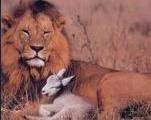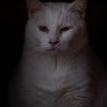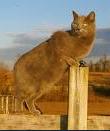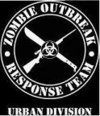The Mountain Meadows Massacre was the killing of roughly 120 Christians who were passing through Southern Utah in September 1857. The massacre occurred on September 11, 1857. The Christians--men, women, and children--were traveling from Arkansas to California, part of the Baker-Fancher wagon train.
Mark Twain wrote of the massacre in Roughing It:
A large party of Mormons, painted and tricked out as Indians, overtook the train of emigrant wagons some three hundred miles south of Salt Lake City, and made an attack. But the emigrants threw up earthworks, made fortresses of their wagons, and defended themselves gallantly and successfully for five days! Your Missouri or Arkansas gentleman is not much afraid of the sort of scurvy apologies for "Indians" which the southern part of Utah affords. He would stand up and fight five hundred of them. At the end of the five days the Mormons tried military strategy. They retired to the upper end of the 'Meadows,' resumed civilized apparel, washed off their paint, and then, heavily armed, drove down in wagons to the beleaguered emigrants, bearing a flag of truce! When the emigrants saw white men coming they threw down their guns and welcomed them with cheer after cheer...."
After deceiving the families they disarmed and separate them, and then on a command, proceeded to murder the men, women, and children.
Excerpts from Sally Denton's 2003 book entitled: American Massacre: The Tragedy at Mountain Meadows, September 1857 (Vintage Books, division from Random House):
”...two of the children cruelly mangled and the most of them with their parents' blood still wet upon their clothes, and all of them shrieking with terror and grief and anguish...” (Denton, p. 139) “Georgia Ann Dunlap was eighteen months old. Her parents and seven sisters and brothers had just been executed in front of her eyes, and she was now alone with her five-year-old sister, Prudence Angelina, who could not stop sobbing.
Emberson Tackitt, four, had watched his mother hacked to death, while his father, two older brothers, an aunt, and three cousins were being shot and their throats cut a few yards away. Gushing blood from the gunshot wound that had mangled her ear, Sarah Frances Baker, three, her five-year-old sister, Mary Elizabeth, and the youngest of the surviving infants, nine-month-old William, had just watched the slaughter of their parents and a seven-year-old sister. Felix Marion Jones was eighteen months old.
Within a few minutes his family had been wiped out, and he would not be able to remembered anything about his murdered mother, father and sister.
Christopher “Kit Carson” Fancher, five, along with his twenty-two-month—old sister, Triphenia, had seen their wounded father shot in his litter and their mother murdered with an ax, while six brothers and sisters under the age of nineteen were being killed nearby.
Nancy Sophrona Huff, at four, was the sole survivor of a family of six annihilated in the same ways. One child died as they arrived at Hamblin's ranch.
Another, one-year-old Sarah Dunlap, had had her left arm nearly severed by a musket ball. Clinging frantically to her, their dresses soaked in blood, were her sisters Rebecca, six and Louisa, four. They had all seen the slaughter of their seven brothers and sisters, as well as both parents, and Rebecca had pried her baby sister from the arms of their dead mother.” (Denton, p. 140)
“One-year-old Sarah Dunlap was shot in the elbow, sending all of the children into a frenzy 'One of the Mormons ran up to the wagon, raised his gun and said 'Lord my God, Receive their spirits. It is for Thy Kingdom that I do this,' reported Sallie Baker. [the mormon equivalent of Alah Akbar!] She then watched as McMurdy fired at two men who were comforting each other, killing them both with one bullet. She saw the wag driver bludgeon a fourteen-year-old boy to death with the butt of a gun.” (Denton, p. 137)
How Did they feel about their crime against humanity?
“The plunder proceeded with a strange quiet. [Mormon] Women from Cedar City and nearby settlements arrived to remove the calico dresses and lace pinafores of the women and children, pulling off their expensive shoes, and ripping earrings, brooches, and rings off the corpses, most to be turned over to the church. 'Their fine stock, their pleasure vehicles, their musical instruments, and abundant and elegant outfit, excited the cupidity of the sacerdotal robbers,' the Salt Lake Daily Tribune later reported...”
Subscribe to:
Post Comments (Atom)


























































No comments:
Post a Comment